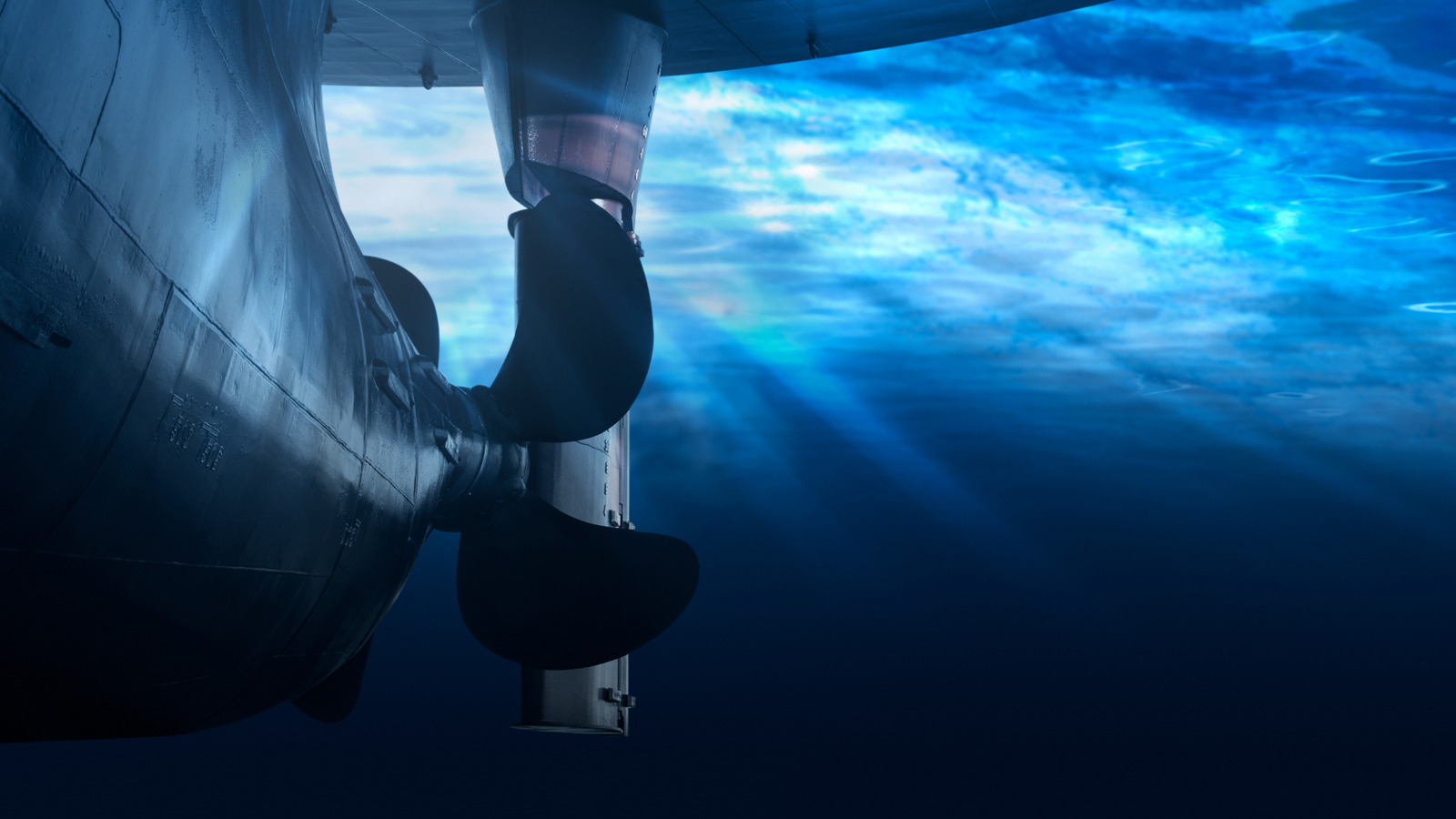Top Stories
Understanding Cavitation: How It Impacts Ship Performance

Cavitation, a phenomenon occurring around a ship’s propeller, poses significant challenges to maritime performance. This complex process not only reduces a vessel’s cruising speed but can also lead to severe physical damage. Understanding how cavitation works is essential for engineers and ship operators aiming to maintain efficiency and safety at sea.
What Is Cavitation?
Cavitation refers to the formation and collapse of vapor bubbles in a liquid, which occurs due to rapid changes in pressure. When a ship’s propeller rotates, it creates a pressure difference in the surrounding water. The rear-facing side generates high pressure, pushing water backward, while the front-facing side creates a low-pressure area. This pressure drop can become so extreme that it causes water to vaporize at temperatures as low as 20°C, rather than the typical 100°C.
These vapor bubbles, akin to the fizz in a soft drink when opened, do not simply dissipate. Instead, they are drawn towards the higher-pressure area at the edge of the propeller blade, where they collapse violently. This implosion generates pressure surges reaching several hundred megapascals and localized temperatures peaking at 400°C. Such conditions can significantly affect the integrity of the propeller itself.
The Effects of Cavitation on Ship Performance
Cavitation has a profound impact on a ship’s operational efficiency. The vapor bubbles that form on the propeller blades increase resistance, effectively making them “thicker.” As a result, the propeller struggles to generate the necessary thrust, leading to a loss of speed. For instance, as cavitation intensifies, engine revolutions per minute (RPM) can increase dramatically while power output remains constant, indicating a steep decline in efficiency.
The physical damage caused by cavitation is equally concerning. The relentless collapse of bubbles acts like a microscopic hammer, eroding the propeller surface over time. This erosion can create a distinctive “orange peel effect” initially, but in severe cases, can lead to holes piercing through solid metal blades.
Beyond performance and damage, cavitation generates excessive vibration and noise. The International Institute of Marine Surveying describes the sound produced as reminiscent of “gravel being forcibly thrown against the underside of the hull.” Such vibrations can harm sensitive components like bearings and seals, further complicating maintenance.
To combat these challenges, engineers implement various strategies. Increasing the blade area or using wider blades helps distribute thrust more evenly, reducing the likelihood of cavitation. For vessels operating below 35 knots, flat, low-loaded blade profiles are often employed to mitigate pressure differences. This approach is particularly relevant for container ships, which typically cruise at around 24 knots, and large oil tankers.
Material selection is also crucial in addressing cavitation. Durable alloys such as bronze and stainless steel are commonly used for propeller manufacturing. Additionally, shaping the ship’s stern can enhance water flow uniformity into the propeller, further aiding in performance.
Interestingly, some engineers have embraced cavitation, developing the concept of supercavitation. This technique intentionally creates a stable vapor bubble that envelops the entire object, reducing friction drag and enabling remarkable speeds. While this approach has proven effective, it remains largely experimental, as seen in vessels like the General Dynamics GHOST Small Unmanned Vessel.
By understanding the intricacies of cavitation, maritime engineers can better design ships to minimize its negative effects, ensuring safer and more efficient travel across the world’s oceans. The ongoing research and development in this area demonstrate a commitment to advancing maritime technology while tackling the challenges posed by this fascinating physical phenomenon.
-

 Entertainment2 months ago
Entertainment2 months agoAnn Ming Reflects on ITV’s ‘I Fought the Law’ Drama
-

 Entertainment3 months ago
Entertainment3 months agoKate Garraway Sells £2 Million Home Amid Financial Struggles
-

 Health2 months ago
Health2 months agoKatie Price Faces New Health Concerns After Cancer Symptoms Resurface
-

 Entertainment2 months ago
Entertainment2 months agoCoronation Street’s Carl Webster Faces Trouble with New Affairs
-

 Entertainment2 months ago
Entertainment2 months agoWhere is Tinder Swindler Simon Leviev? Latest Updates Revealed
-

 Entertainment3 months ago
Entertainment3 months agoKim Cattrall Posts Cryptic Message After HBO’s Sequel Cancellation
-

 Entertainment2 months ago
Entertainment2 months agoOlivia Attwood Opens Up About Fallout with Former Best Friend
-

 Entertainment2 months ago
Entertainment2 months agoMasterChef Faces Turmoil as Tom Kerridge Withdraws from Hosting Role
-

 Entertainment3 months ago
Entertainment3 months agoMarkiplier Addresses AI Controversy During Livestream Response
-

 Entertainment4 months ago
Entertainment4 months agoSpeculation Surrounds Home and Away as Cast Departures Mount
-

 World2 months ago
World2 months agoCole Palmer’s Mysterious Message to Kobbie Mainoo Sparks Speculation
-

 Entertainment2 months ago
Entertainment2 months agoITV’s I Fought the Law: Unraveling the True Story Behind the Drama











